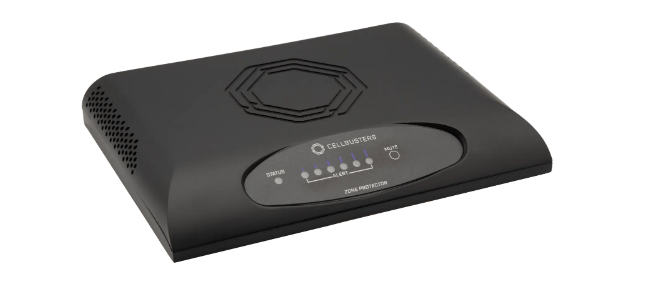Securing Your Business with Wireless Device Detection

As workplace and government networks continue to expand in size and complexity, managing and securing endpoints has become increasingly challenging. With hundreds of devices connected, including phones, tablets, and other wireless devices, businesses are at risk of unauthorized access or attack.
To address this issue, businesses need to implement a comprehensive wireless device detection plan that goes beyond traditional scanning methods. This plan should include the use of specialized devices like the Zone Protector from Cellbusters, which can help detect and prevent rogue wireless devices from accessing your network.
By adopting a strategic wireless device detection plan and using advanced tools like the Zone Protector, businesses can safeguard their networks against unauthorized access and protect their sensitive data from potential threats.
The Importance of Wireless Device Detection

The average worker uses 2.4 devices at work to complete their tasks, and that’s not including any devices the business uses for daily tasks such as registers, cameras, extra phones, and more. There is an abundance of devices using company networks and businesses need to protect their private information from rogue devices; devices that are connected to the system but do not have permission to be on it.
While company issued devices like laptops should adhere to the best cybersecurity practices the company can have, rogue devices do not have the same level of security on them. For example, a worker’s cell phone could be used by malicious attackers to gain access to the company’s system. If not managed correctly, these devices, unknown to the worker, can leave open doors to the system. Once a rogue device is plugged into the network, they can steal information or cause disruption to the network, and in some cases do permanent damage to the systems.
There are steps to help prevent rogue devices from attacking networks, including strong passwords, not connecting to a public Wi-Fi on company computers, turning off Bluetooth on personal devices, and using personal hotspots to connect to the internet. One of the best ways to protect company networks, though, is through properly securing the network means with wireless device detection systems. Wireless device detection methods allow companies and individuals to identify and assess all of the devices on their wireless networks, protecting their privacy.
Wireless Device Detection For the Military
Businesses aren’t the only ones that need to protect their privacy and information; finding unwanted wireless devices is especially important in the government and military. Classified information needs to be kept secret and with a mobile military and government that is constantly traveling, it’s hard to make sure an area is secure of devices.
Temporary SCIFs are becoming more common and with strict guidelines, they need the best technology to find rogue devices and protect the information exchanged within the room. This means being able to detect wireless devices on the move while managing the ones that are allowed. Wireless device detection for the military and other branches of government needs to be flexible and detect a range of international signals. Without proper detection and monitoring, it is easy for rogue devices to slip into the network or SCIF and potentially access sensitive information.
How to Detect Wireless Devices
The intranets and extranets of a business or government can be vast webs. Organizations need to be able to manage these networks and take stock of all the devices that are connected in order to start protecting themselves.
However, many companies, government facilities, and prisons rely on traditional methods to avoid rogue devices on their networks, including banning phones and using metal detectors. While these methods may catch some devices, they are outdated, inefficient, and a threat to companies’ security.
Instead, businesses and governments with large networks should invest in wireless device detection products, such as specially designed scanners, that help to find and manage all devices on a network, including rogue devices. Wireless detection devices are widely available and each one has different features to fit different needs. In most models, they allow administrators to oversee who is on the network, the ability to whitelist any devices, and have powerful ranges to protect facilities of all sizes.
Solutions for Wireless Device Detection

There are various wireless device detection solutions available in the market, including cellphone detector apps. However, products like Cellbusters’ Zone Protector are the ultimate solution for companies looking to defend their networks against rogue devices and manage all devices on their networks.
The Zone Protector offers several benefits, such as its sleek design that allows it to blend in seamlessly with its surroundings and an easy-to-use interface for IT administrators. Other features of the Zone Protector include:
Zero false positives – Amazing detection accuracy
Easy to deploy and works out of the box
Can adjust to small rooms or larger areas for any sized facility
Detects all protocols: 2G, 3G, 4G, 5G, LTS, GSM, CDMA, Bluetooth, and more
Detects all cell phones in all countries
Can control third party devices using the included interface
The Zone Protector is a flexible solution that can be customized for any type of business or government facility. It can be set up as a network device for centralized monitoring or used as a portable device for on-the-go detection. The Zone Protector is highly sophisticated and can detect any rogue device or relevant transmission activity, providing companies with real-time alerts to potential threats. Additionally, the device is future-proofed with upgrades and support from Cellbusters, ensuring that it remains effective and up-to-date as new wireless technologies emerge.
Protecting Businesses from Rogue Devices
Implementing a wireless device detection system like the Zone Protector from Cellbusters can provide businesses with greater control over their network, including the ability to detect and prevent unauthorized devices from accessing it. With an easy-to-use interface, companies can manage their network and keep sensitive information secure. From employee phones to more malicious devices, businesses can stay protected and ensure that only authorized devices are connected to their network.








